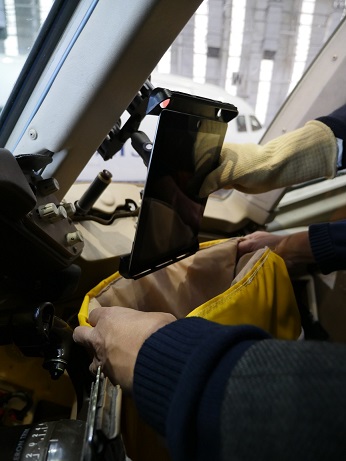
A ban on most electronics in the cabins of some US-bound flights may be aimed at thwarting terrorist attacks, but it also raises questions about the safest place to stow devices with lithium-ion on airplanes.
These serious questions have been posed in a thought-provoking feature by Bree Fowler and Allen St John on the website Consumer Reports.
The Department of Homeland Security in the USA says laptops and other large electronic devices won't be allowed in the passenger cabins of nonstop flights to the US from 10 airports in the Middle East and North Africa. The move is in response to intelligence reports that terrorists are looking for new ways to place explosives in electronic devices on airplanes.
The move currently affects flights coming from specific airports in Jordan, Egypt, Turkey, Saudi Arabia, Kuwait, Morocco, Qatar and the United Arab Emirates.
Passengers on these flights will now be required to pack devices in luggage they check in for the hold. Yet because the lithium-ion batteries in laptops occasionally burst into flames the new rule raises the question: Is it dangerous to store hundreds of laptops in suitcases in the hold of an airplane?
The issue has been studied extensively by aviation safety experts over the past few years. And there is an emerging body of opinion that it is somewhat safer if laptops and similar devices are kept in the passenger compartment rather than the cargo hold.
Why? For one thing, if a laptop catches fire in the cabin it will be noticed immediately and steps can be taken to put it out. And though there are fire safety systems in the hold of an airplane, they aren't well-equipped to deal with the type of fire that lithium-ion batteries generate.
Several major carriers are now carry a pioneering invention called AvSax (pictured left) in the cabin.
AvSax (www.avsax.com) can minimise the fire danger caused by electronic items such as laptops on board aircraft in seconds with its unique use of water.
Simply pour at least two litres of water into an AvSax and then drop the burning device into the bag. The water activates a polymer gel inside the bag’s lining causing it to expand around the device. Should the device keep on burning then the AvSax is tough enough to absorb the force … even if it explodes.
John Cox, a former pilot and chief executive of Safety Operating Systems, an aviation consulting firm, said: “There’s a balance here. As we put lithium-ion batteries in cargo holds, they are no longer in an area where the crew can deal with them if they do catch fire. And the fire suppression systems have not proven to be effective on lithium-ion fires.”
When a battery malfunctions it’s usually because the membranes that separate the charges in the battery are breached, which creates a short circuit and generates a sudden release of energy. That violent burst of energy causes the battery to reach temperatures approaching 1,000° F, potentially destabilising nearby batteries, creating a condition known as thermal runaway.
Last year the Federal Aviation Administration warned that transporting pallets of lithium-ion or nonrechargeable lithium-metal batteries in the cargo holds of planes could cause a “catastrophic explosion” if a single cell were to catch fire. Although stopping short of an outright ban, the agency warned against packing large numbers of batteries together—because of the dangers of thermal runaway—and cautioned that the batteries should be kept separated from other hazardous materials.
The International Civil Aviation Organisation (ICAO), affiliated with the United Nations, last year banned the shipping of lithium-ion batteries as cargo on passenger aircraft because of the safety concerns. As with the FAA's restrictions, the move dealt only with commercial cargo, not the electronics devices carried onboard or stowed beneath the plane by passengers.
Though passengers on domestic flights are currently allowed to pack devices containing lithium-ion batteries in carry-on or checked luggage, the FAA requires that spare batteries—those not installed in a device—be limited to carry-on bags because of the potential for a battery with unprotected electrodes to come in contact with a loose metal object and short out, causing it to ignite.
For more on this story go to http://www.consumerreports.org/electronics/problem-with-stowing-lithium-ion-batteries-on-planes/